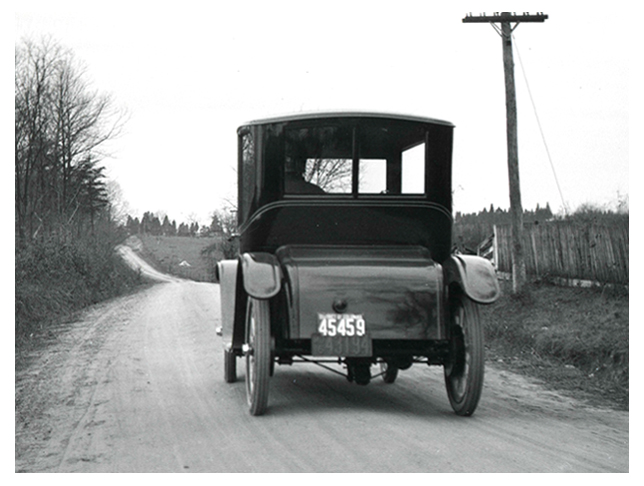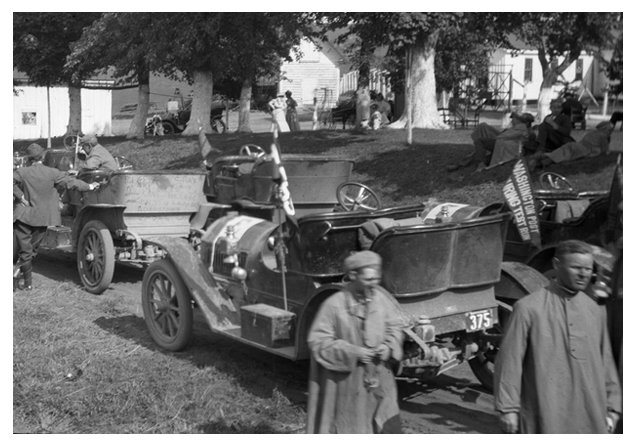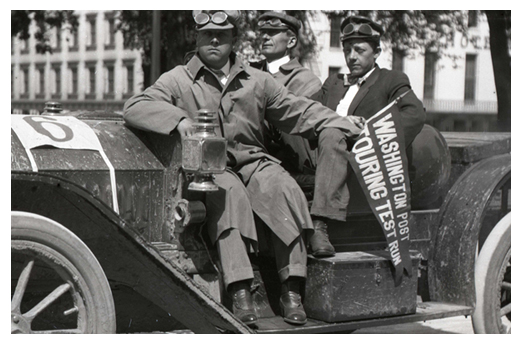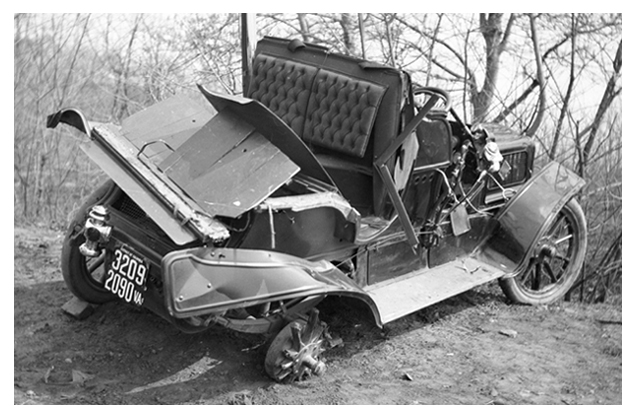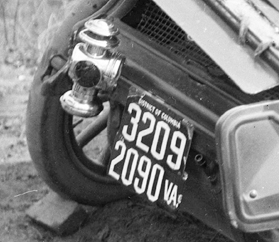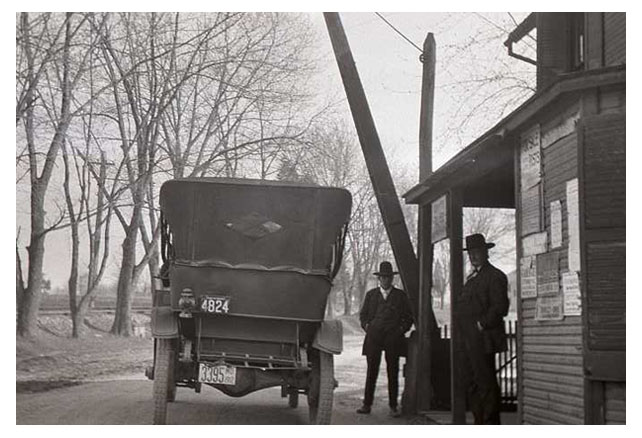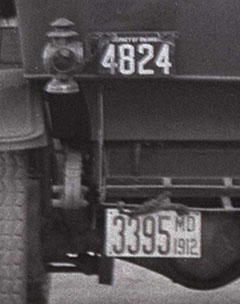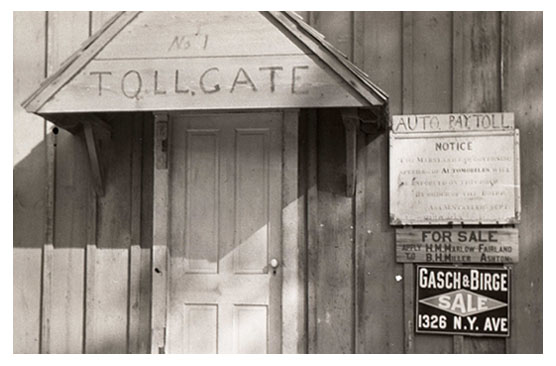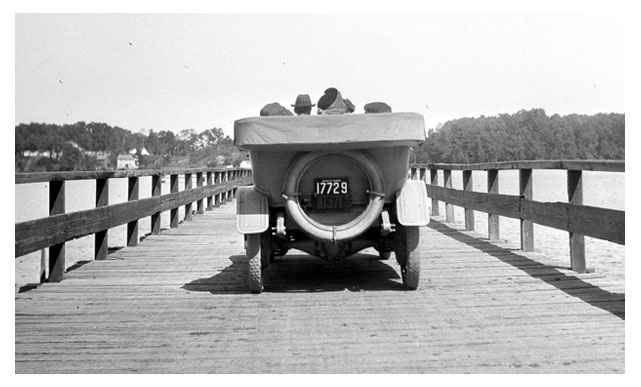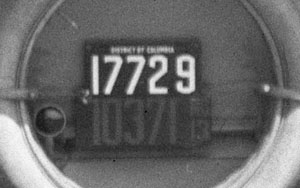When pre-1930 cars are seen today they are almost always restored, well-maintained, and spotlessly clean. In their day, however, they were used (and sometimes abused) just as vehicles are today. The grime covering these touring cars indicates that they've been logging some road miles, and the occasion for their use was the Washington Post Touring Test Run of May 27-31, 1910.
As discussed in gallery 10-1 (link), newspapers often sponsored events for vehicle owners in order to promote the automotive industry and generate industry-related advertising revenue. As noted on pennants affixed to vehicles pictured, the Post sponsored this event, which took participants on a 473-mile northern Virginia course. In addition to visiting Richmond, the travelers also called at Winchester, Staunton, Charlottesville, Orange, Culpeper, Warrenton, and Fairfax.
District of Columbia registration number 375, evidenced with a white-on-black porcelain enamel license plate on the vehicle in the foreground, was assigned to the Carter Motor Car Company. The Carter agency was located in the Munsey Building in Washington.
At least one of the vehicles pictured was apparently used in other regional tours, perhaps being operated and sponsored by its manufacturer or local agent for exposure to potential customers. Scratched into the dirt on the back of the light-colored car, in addition to several names, are names of two Pennsylvania communities, Norristown and Scranton, suggesting that it had recently passed through those places.


